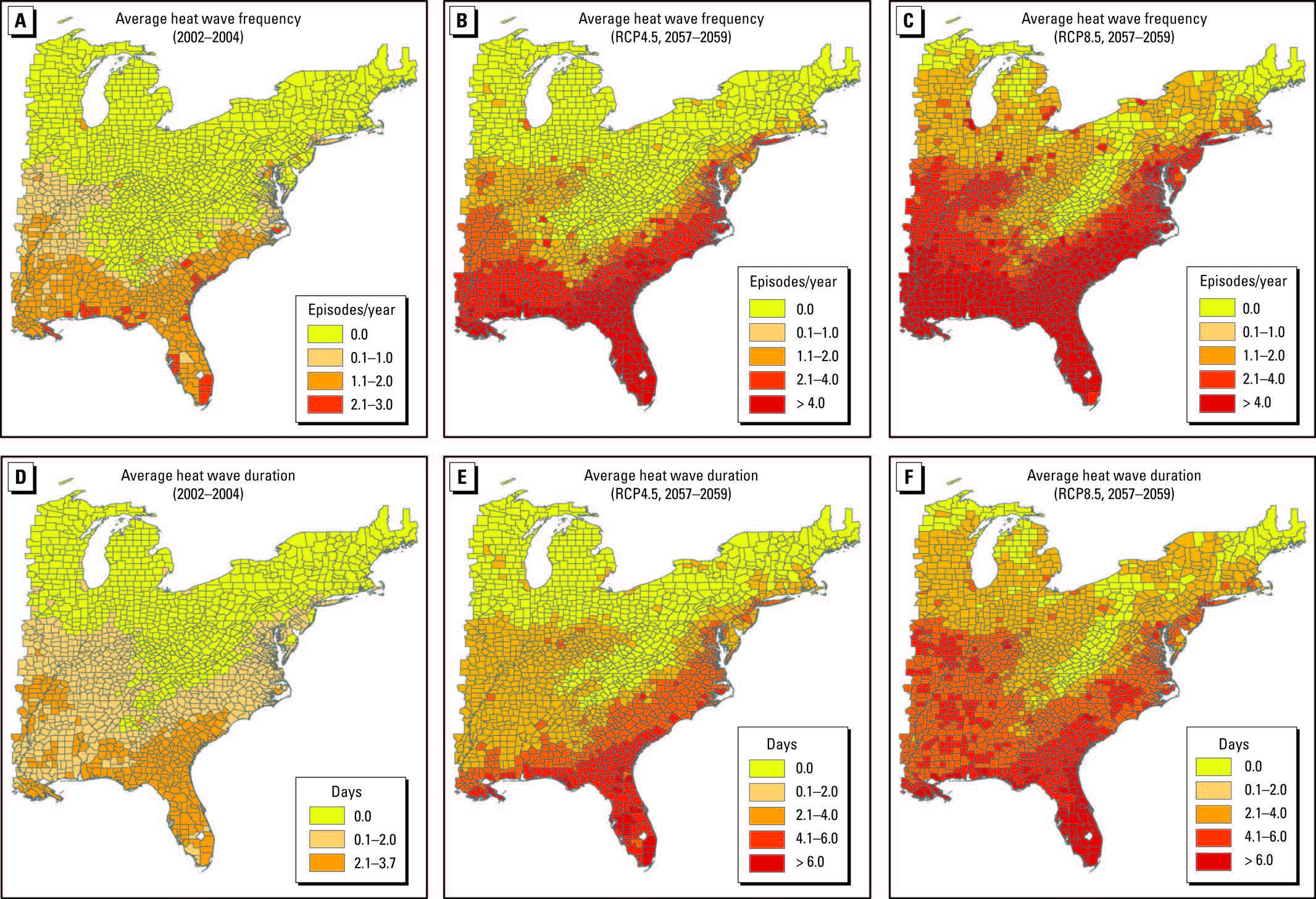Air quality and health impacts of climate change
We work closely with the Oak Ridge National Lab / University of Tennessee to develop a dynamical downscaling scheme based on CESM, WRF, and CMAQ. The high-resolution air quality and climate projections are used to evaluate the impacts of future air quality and extreme weather events on communities in the CONUS domain. So far, we have conducted studies on ground level O3 and heat waves with CDC and NIH funding. Our current EPA STAR project will investigate future fire potentials and fire smoke in the Rocky Mountain Region.
Example: Baseline (2002–2004; A,D) and future (2057–2059; B,C,E,F) estimates of heat wave frequency and duration in study area counties. Heat wave frequency and duration estimates are integrated averages based on four heat wave metrics (Wu et al. EHP, 2014).

Example: Spatial distribution of O3 changes between 2001-2004 and 2057–2059 under RCP4.5 and RCP8.5, respectively (Kim et al. Climatic Change, 2015).
